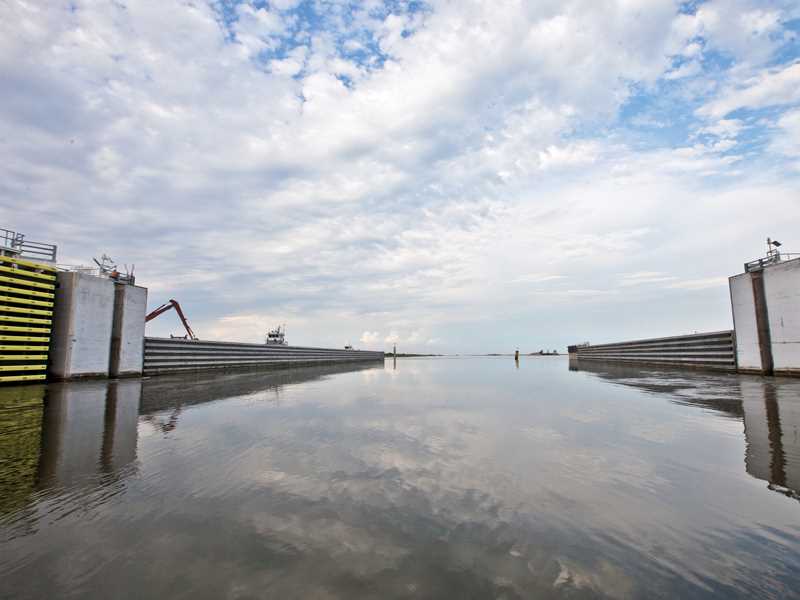New capital sources ready
Katrina losses act as alternative market catalyst Reprints
The alternative capital market has evolved significantly in the 10 years since Hurricane Katrina, leading to structural changes and increased velocity in the ways capital enters the insurance and reinsurance markets.
In the wake of Hurricane Katrina and sharply higher property/casualty rates, much capital flowed into the sector through startup insurers and reinsurers, many known as the Class of 2005.
Hurricane Katrina Revisited. Please enjoy this subscriber-only article on a complimentary basis until Sept. 4, 2015. Want unlimited access? Become a subscriber today.
“The way the capital used to flow into the market was by new startup reinsurers,” said Cory Anger, global head of insurance-linked securities structuring at GC Securities in New York.
Today, the infrastructure supporting alternative capital movement is far more sophisticated, allowing it to be deployed more rapidly.
“The way that capital is flowing now is really accelerated,” said Ms. Anger.
“Money can come in very, very quickly,” said Brad Adderley, a Bermuda-based partner in the corporate department of the Appleby law firm. “For an ILS fund to accept another $1 billion in funds, it's just like turning on a tap. It's not like forming a new company. Previously, you formed a new company.”
“Companies may have a $200 million sidecar now but have parties they are working with that could ramp that up to a very large amount if there's a market need,” said Bill Dubinsky, head of ILS at Willis Capital Markets & Advisory in New York.
Sidecars, which typically are quota share reinsurance arrangements, cover risks such as U.S. wind, convective storm or European wind.
“They can bolt on to the existing networks they've built with the intermediaries to deploy such capital,” said Ms. Anger. “There are a number of folks that have already set themselves up with managers that only have a toe in the water, but they are set up in a way with relationships with managers and intermediaries that they can flow in money extremely quickly.”
That has reduced the need to form new companies to float catastrophe bonds and other ILS instruments.
“The industry has the ability to get access to capital very quickly, and this will mitigate how many traditional reinsurers would actually be founded post-event,” said Ms. Anger.
“In a way, it's a very different market right now,” said Mr. Dubinsky.
“In the 1990s, there were different startups in Bermuda; but after 2006, when people saw that sidecars could do a very good job in filling the gap in capital needs after an event, that potential to do startups has probably declined,” he said.
“Today, if there was a major loss, a fund would just receive more money. You don't have to form a new company,” said Mr. Adderley. “It's just easier and quicker. You don't have to form an underwriting team or find a CEO.”
Another way to deploy such capital is to form a new sidecar, which is easier and quicker than forming an entirely new reinsurer, he said.
Investors already are assembled, simply waiting for an opportunity from a large loss event to deploy funds, because the investment can off greater returns than other investment vehicles and is not correlated to the stock market.
“We're certainly aware of as a firm many investors which, should that type of event happen, are willing to increase their allocations from their current level today or will be ready to come back into the market,” said Paul Schultz, CEO of Aon Securities in Chicago.
“Now, sidecars have become more strategic in the sense that people are establishing these relationships for potential market-moving events,” said Mr. Dubinsky.
“We will likely see some investors exit the asset class, but we would also expect new investors to come in as we are aware of a number of investors who are sitting on the sidelines in anticipation of a rate-hardening event,” Judy Klugman, New York-based head of ILS distribution and sales at Swiss Re Ltd., said in an email.
Katrina's more than $40 billion in insured losses catalyzed the market.
“I actually do think it was a point in the development of the market which was an accelerant and a positive factor for the inflow of capital because there was just a greater opportunity and need for capital in the marketplace than in prior years,” said Mr. Schultz.
“It definitely created opportunities for new capital to come in,” said Mr. Adderley. “We saw new capital raised and we saw additional bolt-on capital come in.”
“It is accurate to say that a great deal of capital entered the market post-Katrina. As capacity was highly constrained and rates were hardening, many new investors identified the opportunity in the sector, and the market grew dramatically,” said Ms. Klugman.
“Coming out of Katrina, that's where we saw the first flood of opportunistic sidecars supporting reinsurers, and I think from the perspective of both the reinsurers and the investors, that was a real success,” said Mr. Dubinsky.
Year to date catastrophe bonds outstanding is $23.2 billion compared with $5.09 billion outstanding in 2005.
Read Next
-

Schooled by Katrina?
New Orleans is far better prepared for a major hurricane 10 years after Hurricane Katrina devastated much of the city, but the same is not necessarily true for other cities along the Gulf and East Coasts.